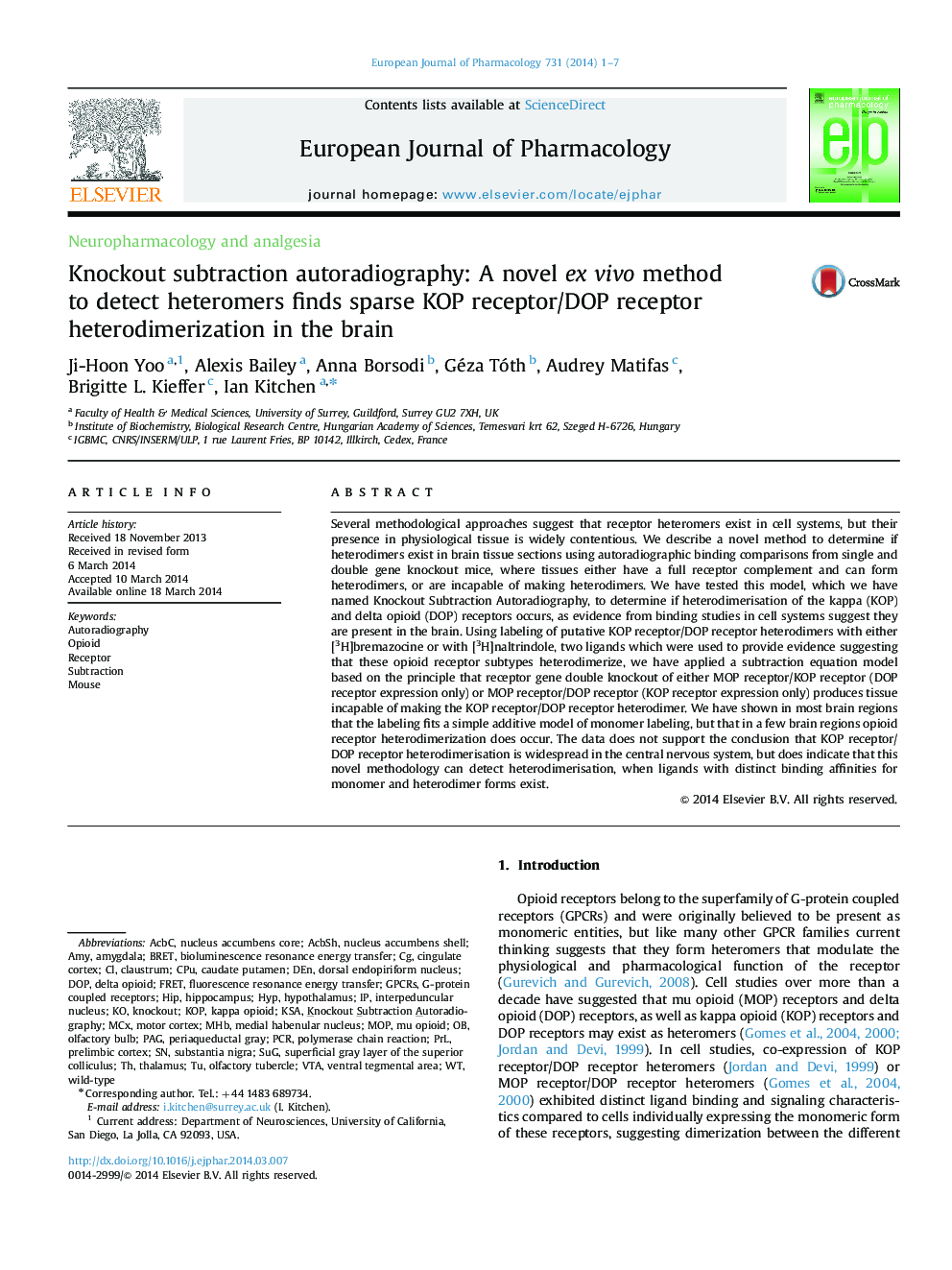| Article ID | Journal | Published Year | Pages | File Type |
|---|---|---|---|---|
| 2531780 | European Journal of Pharmacology | 2014 | 7 Pages |
Several methodological approaches suggest that receptor heteromers exist in cell systems, but their presence in physiological tissue is widely contentious. We describe a novel method to determine if heterodimers exist in brain tissue sections using autoradiographic binding comparisons from single and double gene knockout mice, where tissues either have a full receptor complement and can form heterodimers, or are incapable of making heterodimers. We have tested this model, which we have named Knockout Subtraction Autoradiography, to determine if heterodimerisation of the kappa (KOP) and delta opioid (DOP) receptors occurs, as evidence from binding studies in cell systems suggest they are present in the brain. Using labeling of putative KOP receptor/DOP receptor heterodimers with either [3H]bremazocine or with [3H]naltrindole, two ligands which were used to provide evidence suggesting that these opioid receptor subtypes heterodimerize, we have applied a subtraction equation model based on the principle that receptor gene double knockout of either MOP receptor/KOP receptor (DOP receptor expression only) or MOP receptor/DOP receptor (KOP receptor expression only) produces tissue incapable of making the KOP receptor/DOP receptor heterodimer. We have shown in most brain regions that the labeling fits a simple additive model of monomer labeling, but that in a few brain regions opioid receptor heterodimerization does occur. The data does not support the conclusion that KOP receptor/DOP receptor heterodimerisation is widespread in the central nervous system, but does indicate that this novel methodology can detect heterodimerisation, when ligands with distinct binding affinities for monomer and heterodimer forms exist.
